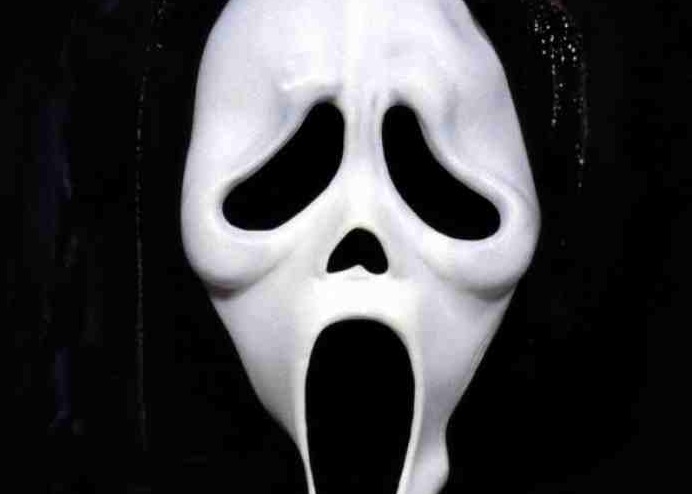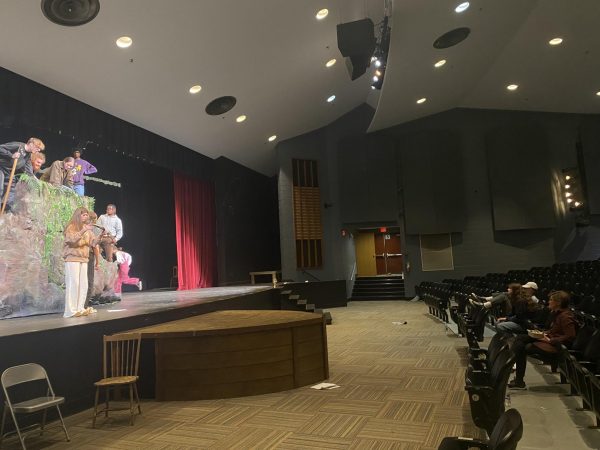LAW: Horror movie formula plays off our most basic fears
They’re time machines for the subconscious. They unearth ancient, visceral mindsets from dormancy. We’re rendered to weak little rodents scurrying across the pre-historical landscape at the whims of their masters.
Sound like something out of a horror movie? Actually, it’s the foundation of the genre.
By dissecting the basic components of horror movies, we can understand the most primitive mechanisms in our brains, the genetic vestiges of a time before humanity existed as we know today. What we fear is an excellent indicator as to who we are as people.
Really, horror movies are simply an exploitation of our prehistory. They tap into our primitive evolutionary fears of falling prey to something larger and faster than we are. Virtually every single horror movie has the predator-prey dynamic, even to just a minor degree.
The predator-prey dynamic is the main character(s) being stalked, followed, watched and chased after. The most entertaining moments in horror movies come with the main character trying to escape from whatever entity hunts him (or usually her): running desperately through a dark hallway, crawling through basements, tripping and falling, hiding under tiny spaces. Vulnerability is what scares us most.
So much of horror movie thrill can be easily connected to observable hunting phenomenon in the wild. Some of the most hair-raising moments of film are when the monster is concealed but expected to leap out at the protagonist. For many, just the anticipation is enough to raise blood pressure. Why is anticipation by itself so effective? It’s a very direct link to our ancient, evolutionary subconscious – a small mammal shivering in the grass, waiting to be pounced on by something unseen.
Now we can get into the film’s monsters themselves, the vessels of the terror delivered to us. The design of the creatures is significant. Most of the time, horror movie entities can be classified into two distinct categories: phenomena we don’t understand and manifestation in reality.
Most monsters under the category of “phenomena we don’t understand” are supernatural. Supernatural monsters vary much due to the room for creativity. Usually, the main characteristic of said entities is death and/or spirituality. Many supernatural monsters are undead or have some undead, evil characteristics.
One interesting, distinct subgroup is aliens. Aliens are an entity that fall under the category of “phenomena we don’t understand”, but aren’t necessarily supernatural in the sense that they bend the laws of nature the way spirits do.
The monsters of the supernatural subgroup often have distorted human characteristics. Examples are endless: Eyes that don’t blink or are too big; indistinct voices such as the sound of children laughing in the distance; pasty skin tones; limbs and fingers that bend abnormally or are too long. Faces especially are disturbing when they are warped or are “off” in obvious or subtle degrees.
Computer animators and robotics engineers have accidentally encountered a problem related to this concept, the revulsion of parodying human features, and refer to it as “the uncanny valley”.
The closer an animated depiction of a person is to reality, the more eerie we find the depiction. We become more aware of the unnatural flaws said image has. Long, unblinking stares, extra- long limbs and jerky joint movements are extremely apparent to us. The more human an animated depiction tries to be, the less human said depiction seems. The inhumanness is ironically obvious. That’s why animatronic figures in museums and porcelain dolls are extremely unsettling to many. Until animation and robotics becomes 100% perfect in their portrayals, we’ll still be creeped out by animatronic faces.
Distortion of human characteristics in horror movies has countless examples. Freddy Krueger’s grotesque face, Chuckie’s doll mannerisms, any vampire or zombie movie, the grimy demon in The Exorcist, the little girl in The Ring, and the pale, elongated mask in Scream all have uncanny-valley attributes.
Rather than scaring us with the construction of someone else’s nightmare, many movies are also successful through maintaining an association with reality. A sense of reality is harder to maintain in a fictional movie; the most popular example is Jaws. Attaching fiction to fear of the real world is challenging, but effective when successful. Others under this subset are normally movies about serial killers. Once realism is solidly established, the movie resonates well after we have finished watching it.
Many would argue non-supernatural horror movies have a greater influence on society. The fear of being slaughtered by some maniac is heavily invested in many of us; every time we go to use the restroom we have to make sure there’s not a psycho, chainsaw-wielding clown behind the shower curtain. Jaws killed beach tourism the summer it was released, and many people express paranoia at being in ocean water higher than their thighs.
The Paranormal Activity movies are an interesting, unique re-combination of these usually contrasting traits: connection to reality and the supernatural. Although the entity in the movie is supernatural, Paranormal Activity manages to tap into our real paranoia about our environment, contrary to the normal horror movie recipe. No one watches movies about vampires and is scared of vampires afterward. However, after watching Paranormal Activity, people do fear ordinary occurrences in their own home. The movie heavily relies on our own personal imaginations.
Paranormal Activity invests fear into a sensation we already deal with. It doesn’t even have its own monster or killer. Instead, it relies on our own brains to construct what we fear most. By not having its own physical manifestation, the entity in Paranormal Activity invests itself in the universal fear of things that go bump in the night.
Everyone is familiar with the mild paranoia induced by being in a quiet room and having things suddenly fall off the wall or hearing boards creak late at night. The movie heavily enhances that fear. In this way, Paranormal Activity attaches itself to the daily anxiety we have every day.
What these traits — the uncanny valley, the fixation with death, the being hunted — have in common is a lack of humanity. Really, truly frightening movies create characters with a lack of basic human qualities. The easy way would be to make obvious physical abnormalities, such as the case with the uncanny valley. A much more impressive and effective technique is to instead make a character whose abnormalities are entirely mental. The most successful horror movies use this tactic, as with the case of Silence of the Lambs and two of the greatest horror characters ever constructed: Hannibal Lecter and Buffalo Bill.
Other excellent movies explore the frightening potentials of insanity, such as The Shining and Shutter Island. We fear what we can’t control, such as undead predators, but being unable to control our own mental well-being is its own level of terrorizing.
Horror movies try to resurrect a manifestation of evil, and evil is simply a lack of humanity. A lack of humanity can be literal, in the sense of an unfeeling predator, or an undead monster, or the monster can be in ourselves; the monster can simply be our own incapacities.







